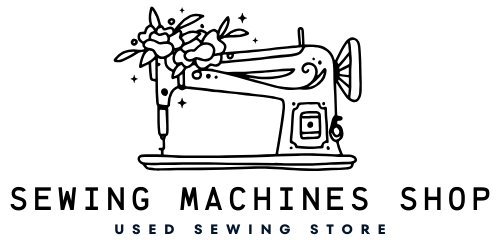Introduction
Starting out in the world of sewing can be both exciting and overwhelming. With a variety of options available, one of the first decisions you’ll face is whether to choose a manual or computerized sewing machine. Each type has its own set of features and benefits, making it crucial to choose the right one for your needs. So, which sewing machine is best for beginners? Let’s dive into the pros and cons of both types to help you make an informed choice.
Understanding Sewing Machine Types
Manual Sewing Machines
Manual sewing machines are the traditional workhorses of the sewing world. These machines operate using mechanical parts and offer a straightforward approach to sewing.
Basic Features:
- Simplicity: Manual machines come with basic features like stitch length and width adjustments, a manual thread tension dial, and a foot pedal.
- No Electronics: With no electronic components, these machines are less prone to malfunctions and are often easier to repair.
Advantages for Beginners:
- Ease of Use: The straightforward controls make it easier for beginners to learn the basics of sewing.
- Affordability: Manual machines are generally less expensive, which is great if you’re just starting out and not ready to make a large investment.
- Durability: With fewer moving parts, manual machines are built to last and require less maintenance.
Computerized Sewing Machines
Computerized sewing machines represent the modern era of sewing. These machines use electronic components to enhance functionality and offer advanced features.
Basic Features:
- Advanced Features: Computerized machines come with various built-in stitches, embroidery capabilities, and automated functions like thread cutting and buttonholing.
- User Interfaces: Many models include touch screens and programmable settings that make sewing tasks easier and more efficient.
Benefits for New Sewists:
- Automation: Features such as automatic needle threading and stitch selection can simplify sewing tasks, making the learning process smoother.
- Versatility: With a range of functions and stitch options, computerized machines can handle a variety of sewing projects, from simple garments to intricate embroidery.
Pros and Cons of Manual Sewing Machines

Advantages of Manual Machines
- Simplicity and Ease of Use: Manual machines are often favored by beginners for their straightforward controls. You won’t get overwhelmed by complex menus or settings.
- Lower Cost and Fewer Maintenance Issues: Generally, manual machines come with a lower price tag and fewer components that can break down. This makes them more cost-effective in terms of both initial purchase and long-term maintenance.
Disadvantages of Manual Machines
- Limited Features and Functionalities: Manual machines may lack some of the advanced features that computerized models offer. This can limit your ability to experiment with different sewing techniques and projects.
- Slower Learning Curve: While they are simpler, manual machines might require more practice to master advanced techniques that computerized machines can automate.
Pros and Cons of Computerized Sewing Machines
Advantages of Computerized Machines
- Advanced Features and Functionalities: Computerized machines come with a range of features that can make sewing easier and more enjoyable. These include automatic stitch adjustments, built-in tutorials, and programmable stitch patterns.
- User-Friendly Interfaces: With touch screens and intuitive controls, computerized machines can be easier to navigate, even for beginners. Automation features like automatic thread cutting can also speed up the sewing process.
Disadvantages of Computerized Machines
- Higher Cost and Potential for Technical Issues: Computerized machines often come with a higher price tag and more complex parts. This means they can be more expensive to repair if something goes wrong.
- Maintenance and Repair Complexities: The advanced technology in computerized machines can make them harder to maintain and repair. This might require professional help, which could be an additional cost.
Key Considerations for Beginners
Budget
When choosing between a manual and computerized sewing machine, your budget is a significant factor. Manual machines are typically less expensive, which is advantageous if you’re just starting out and want to keep costs low. Computerized machines, while more expensive, offer additional features that might be worth the investment if you plan on doing more complex sewing.
Learning Curve
Consider how quickly you want to learn the basics of sewing. Manual machines offer a more hands-on approach, which can be beneficial for understanding the fundamental mechanics of sewing. On the other hand, computerized machines can simplify many tasks and help you progress faster with their automated features.
Project Goals
Think about what types of projects you want to undertake. If you’re planning to stick to basic sewing projects, a manual machine might be sufficient. However, if you’re interested in exploring a range of sewing techniques and creative projects, a computerized machine could provide the versatility you need.
Real-Life Examples and Recommendations
Best Manual Sewing Machines for Beginners

- Singer 4423 Heavy Duty Sewing Machine: Known for its durability and ease of use, this model is a great choice for beginners. It offers straightforward controls and reliable performance.
- Brother XM2701 Lightweight Sewing Machine: This is a versatile and affordable option that’s ideal for those who are just starting out. It features 27 built-in stitches and a simple interface.
Best Computerized Sewing Machines for Beginners
- Brother CS6000i Computerized Sewing Machine: With 60 built-in stitches and an easy-to-use interface, this machine is perfect for beginners looking to explore different sewing techniques.
- Janome DC2014 Computerized Sewing Machine: This model offers a range of features, including 50 built-in stitches and an automatic needle threader, making it a great choice for new sewists.
Making Your Decision
Evaluating Your Needs
Take a moment to assess what you truly need from your sewing machine. If you value simplicity and durability, a manual machine might be the way to go. If you’re excited about advanced features and automation, a computerized machine could be a better fit.
Future Considerations
Think about how your sewing interests might evolve. If you anticipate wanting to try out more complex projects or need a machine that can grow with your skills, investing in a computerized machine might be a wise choice.
Conclusion
Choosing the right sewing machine as a beginner involves weighing the benefits of manual versus computerized options. Manual machines offer simplicity and durability, making them a cost-effective choice for those new to sewing. Computerized machines, on the other hand, provide advanced features and automation, which can be beneficial for those looking to explore a variety of sewing techniques. Ultimately, the best sewing machine for you depends on your budget, learning preferences, and project goals.
FAQs
What is the main difference between manual and computerized sewing machines?
Manual machines rely on mechanical controls and have fewer features, while computerized machines use electronic components to offer advanced functions and automation.
Are computerized sewing machines too complicated for beginners?
Not necessarily. Computerized machines often come with user-friendly interfaces and features that can simplify the learning process. However, they can be more complex than manual machines.
Can I upgrade from a manual to a computerized machine later?
Yes, many sewists start with a manual machine and upgrade to a computerized model as their skills and needs evolve.
How much should I spend on a beginner sewing machine?
Beginner sewing machines can range from $100 to $500, depending on whether you choose a manual or computerized model. Consider your budget and the features you need.
What features should I look for in a beginner sewing machine?
Look for a machine that offers ease of use, reliability, and features that match your sewing goals. For manual machines, simplicity is key, while computerized machines should have user-friendly controls and useful functionalities.
Visit our Store for the best sewing machine deals.
For more insightful articles, visit our Medium page !

